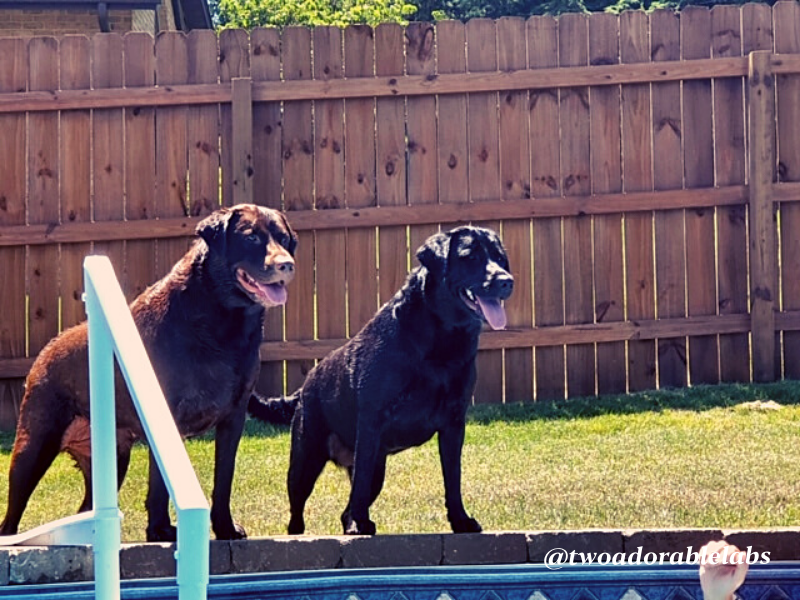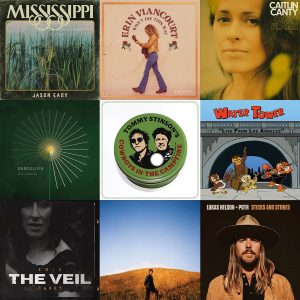Contents
- Choosing Dog-Friendly Weed and Feed Products
- Preparing Your Yard for Weed and Feed Treatment
- Safety Measures to Protect Your Dogs During Weed and Feed
- Proper Application Techniques for Weed and Feed
- Post-Treatment Care for Your Yard and Dogs
- Common Mistakes to Avoid When Using Weed and Feed
- Recognizing and Treating Weed and Feed-related Health Issues in Dogs
- Long-term Yard Maintenance Strategies for Dog Owners
- Alternative Yard Care Options for Dog Owners
- Conclusion
Keeping your yard healthy for your dogs can be a challenging task, but with the help of Weed & Feed, it becomes much easier. This comprehensive guide offers valuable information and practical tips on how to maintain a lush and safe outdoor space for your furry friends. From identifying and treating common weeds to understanding the right type of lawn fertilizer, Weed & Feed is your go-to resource for keeping both your yard and your dogs happy and healthy. Say goodbye to pesky weeds and hello to a vibrant, dog-friendly yard with Weed & Feed!
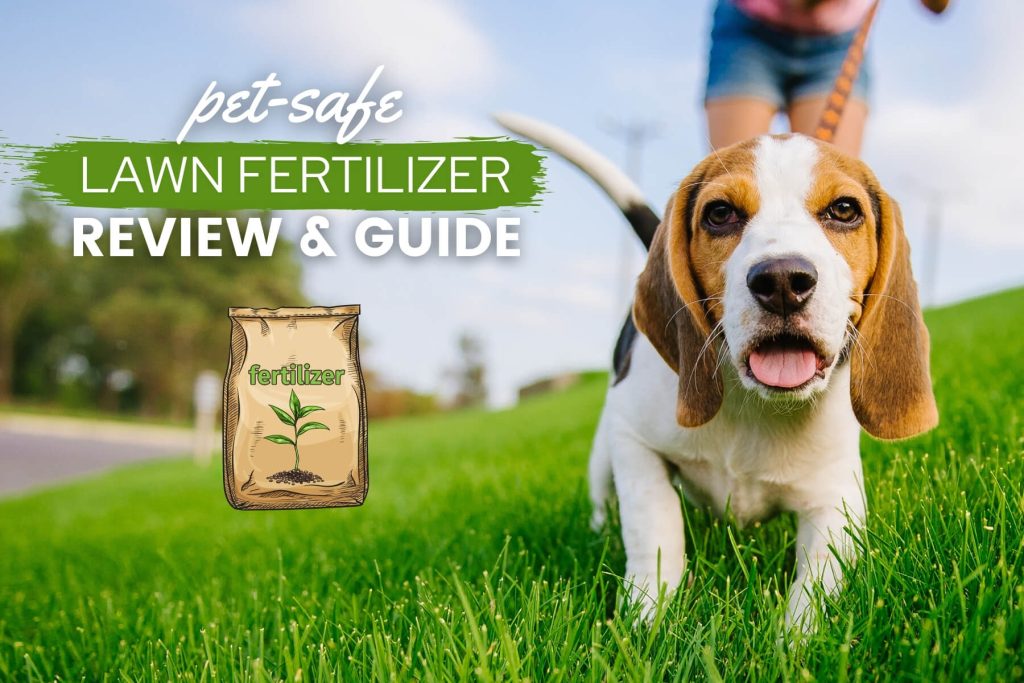
Choosing Dog-Friendly Weed and Feed Products
Understanding the Importance of Dog-Friendly Products
When it comes to maintaining a healthy yard for our dogs to roam and play in, it is crucial to choose weed and feed products that are safe for them. Traditional weed and feed products often contain harmful chemicals and pesticides that can be toxic to dogs when ingested or absorbed through their paws. By opting for dog-friendly products, you can ensure the health and well-being of your furry friends while still effectively managing your yard’s weed and feed needs.
Reading Labels and Ingredients Carefully
One of the essential steps in choosing dog-friendly weed and feed products is to carefully read labels and ingredients. Take the time to research and understand the specific chemicals and pesticides used in the products you are considering. Look for products that clearly state they are safe for pets and have undergone rigorous testing for toxicity. Keep an eye out for any warning labels or precautions related to pet exposure. By being informed about the ingredients, you can make an educated decision and choose products that prioritize your dog’s safety.
Avoiding Harmful Chemicals and Pesticides
Many common chemicals and pesticides found in traditional weed and feed products can pose significant health risks to dogs. For example, herbicides like glyphosate, commonly found in weed killers, have been linked to various health issues in dogs, including cancer. Pesticides like carbaryl and pyrethroids can also be harmful to pets. When selecting dog-friendly weed and feed products, choose those that specifically avoid these harmful chemicals and pesticides. Opting for safer alternatives can help prevent potential health issues for your dogs.
Considering Organic and Natural Options
An excellent alternative to traditional weed and feed products is to consider organic and natural options. These products are formulated using naturally derived ingredients and do not contain harmful chemicals or pesticides. Look for products that are labeled organic or natural and are certified by recognized organizations. Organic and natural options not only provide a safer environment for your dogs but also contribute to a healthier ecosystem overall. By choosing these alternatives, you can achieve a beautiful yard without compromising your dogs’ health.
Consulting with a Veterinarian for Recommendations
To ensure you are making the best choices for your dogs’ safety, it is always a good idea to consult with your veterinarian. They can provide invaluable guidance and recommend specific dog-friendly weed and feed products that align with your dogs’ individual needs. Veterinarians have a comprehensive understanding of the potential risks associated with various chemicals and pesticides, and they can help you navigate the overwhelming number of options available. By seeking their professional advice, you can make informed decisions and prioritize your dogs’ well-being.
Preparing Your Yard for Weed and Feed Treatment
Clearing the Yard of Dog Toys, Water, and Food Bowls
Before applying any weed and feed products, it is vital to clear the yard of any dog toys, water bowls, and food bowls. This ensures that these items do not come into contact with the products or get accidentally ingested by your dogs. Remove all toys and bowls from the treatment area and keep them in a safe place until the yard has been thoroughly treated, washed, and dried.
Removing Any Obstacles and Debris
To allow for efficient application and maximize the effectiveness of weed and feed treatment, it is necessary to remove any obstacles and debris from your yard. Clear away fallen branches, leaves, and other clutter that may hinder the even distribution of the products. Smooth out any uneven areas and remove large rocks or objects that may interfere with the application process. A clear and debris-free yard will ensure that your weed and feed treatment reaches all areas of the lawn.
Mowing the Lawn to an Appropriate Height
Before applying weed and feed products, mow your lawn to an appropriate height. The recommended height may vary depending on the grass type, so it is essential to research and understand the specific requirements for your yard. Mowing the lawn to the recommended height ensures that the weed and feed products can penetrate the grass evenly, reaching the roots of the weeds and providing optimal results. Additionally, proper mowing promotes healthy grass growth and a well-maintained appearance.
Dealing with Existing Weeds
If your yard has existing weeds, it is important to address them before applying weed and feed products. While weed and feed products can help prevent future weed growth, they are not always effective at eliminating well-established weeds. Pull or dig out any visible weeds manually or consider using a targeted weed killer to eradicate them. By removing existing weeds, you create a clean and healthy surface for the weed and feed treatment to work effectively.
Applying Pre-Emergent Weed Control
To prevent weed growth in the future, consider applying pre-emergent weed control in addition to your weed and feed treatment. Pre-emergent weed control works by creating a barrier that prevents weed seeds from germinating. It is typically applied before weed growth occurs, usually in early spring or fall, depending on your region. By incorporating pre-emergent weed control into your yard maintenance routine, you can minimize the need for frequent weed and feed applications, reducing potential exposure to your dogs.
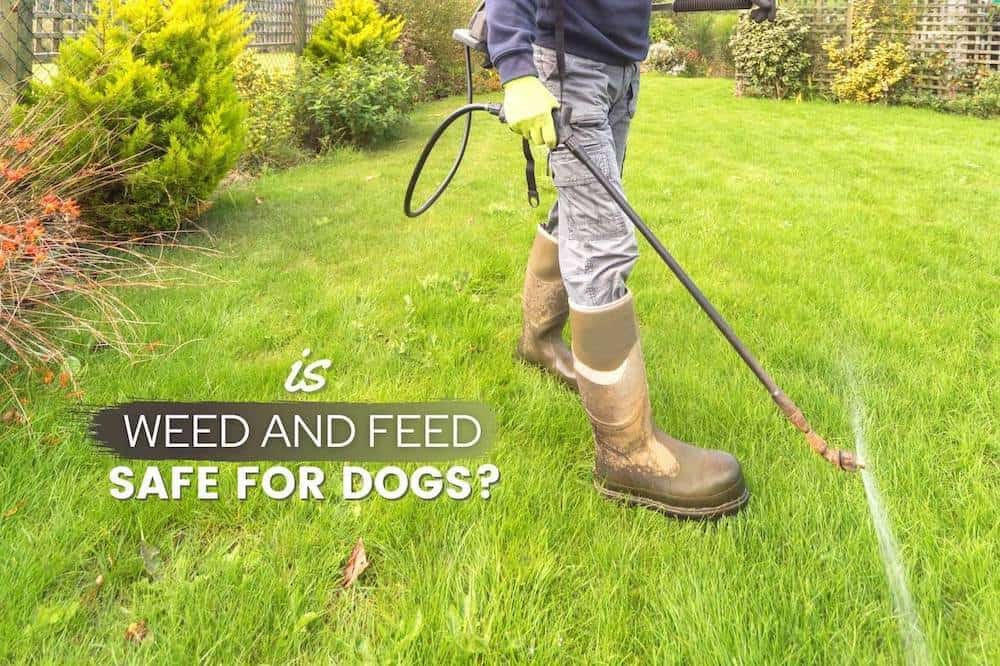
Safety Measures to Protect Your Dogs During Weed and Feed
Keeping Dogs Away from Treated Areas
After applying weed and feed products, it is essential to keep your dogs away from the treated areas until it is fully dry. The specific drying time may vary depending on the product and environmental conditions. Dogs can accidentally ingest or come into contact with the chemicals if they walk through or roll on the treated surfaces while they are still wet. To prevent any potential harm, restrict access to the treated areas and encourage your dogs to stay in a designated safe zone until the treatment is completely dry.
Restricting Access to the Yard During Application
To ensure the safety of your dogs, it is advisable to restrict their access to the yard during the weed and feed application process. This minimizes their exposure to airborne particles and prevents them from accidentally ingesting the products or coming into direct contact with them. If possible, consider keeping your dogs indoors or in a secure, separate area of your property while the application takes place. By restricting access, you can avoid any potential harm and ensure the effectiveness of the treatment.
Providing Alternative Exercise and Play Areas
While your yard is being treated with weed and feed products, it is crucial to provide alternative exercise and play areas for your dogs. This ensures that they still receive the physical activity they need while avoiding any potentially harmful areas. Take your dogs for walks, play with them in a different section of your property, or visit a nearby dog park to keep them engaged and entertained. By providing alternative areas for exercise and play, you can maintain their well-being while effectively managing your yard.
Cleaning Up Any Spills or Overapplication Immediately
Accidents can happen during the weed and feed application process, and spills or overapplication can occur. If such incidents happen, it is crucial to clean up any spills or excess product immediately. Use absorbent materials or paper towels to soak up any spilled liquid or remove any excess granules. Dispose of the contaminated materials properly, following the manufacturer’s instructions and local regulations. By promptly addressing spills or overapplication, you can minimize the risks to your dogs and prevent any accidental exposure.
Monitoring Dogs for Any Signs of Irritation or Allergies
Even with proper precautions and dog-friendly products, some dogs may still experience mild irritation or allergies to weed and feed treatments. It is essential to monitor your dogs closely for any signs of discomfort, such as excessive scratching, redness, or rashes. If you notice any unusual behavior or symptoms, contact your veterinarian immediately for guidance. They can assess your dog’s condition and recommend appropriate treatments or interventions to provide relief and ensure their well-being.
Proper Application Techniques for Weed and Feed
Following Manufacturer Instructions and Guidelines
To achieve the best results and ensure your dogs’ safety, it is crucial to follow the manufacturer’s instructions and guidelines when applying weed and feed products. Each product may have specific application rates, timing, and precautions that need to be considered. Read and understand the instructions provided on the packaging thoroughly before starting the application process. By adhering to the manufacturer’s recommendations, you can ensure proper application and avoid any potential risks to your dogs and the environment.
Using Appropriate Protective Clothing and Equipment
When handling and applying weed and feed products, it is important to protect yourself and avoid potential exposure to harmful chemicals. Wear appropriate protective clothing, including long sleeves, long pants, gloves, and closed-toe shoes. Additionally, consider using safety goggles or glasses to protect your eyes from any potential splashes. By using proper protective clothing and equipment, you can minimize the risk of accidental contact with the products and reduce the chance of transferring them to your dogs.
Dividing and Marking the Yard into Sections
To ensure even distribution and avoid over or under-application, it is helpful to divide your yard into sections and mark them accordingly. This allows you to apply the weed and feed products systematically and track your progress. Use flags, stakes, or other markers to clearly designate the boundaries of each section. By dividing and marking the yard, you can ensure consistent coverage and prevent any missed or overlapping areas.
Applying Weed and Feed Products Uniformly
When applying weed and feed products, it is essential to distribute them uniformly across the designated sections of your yard. Follow the recommended application rates and techniques provided by the manufacturer, such as using a spreader or sprayer, to achieve an even spread. Taking the time to ensure even application helps maximize the product’s effectiveness while minimizing the risk of overexposure in certain areas. By applying the weed and feed products uniformly, you can achieve a healthy and uniform lawn.
Watering the Yard After Application
After the weed and feed products have been applied and allowed to sit for the recommended time, it is beneficial to water the yard lightly. Watering helps activate the weed control components, ensuring they reach the roots of the weeds and provide optimal results. It also helps to prevent any potential burns or irritation caused by direct contact with the products. Consult the manufacturer’s instructions for the recommended watering schedule and amounts. By appropriately watering the yard, you can promote healthy grass growth and enhance the overall effectiveness of the treatment.
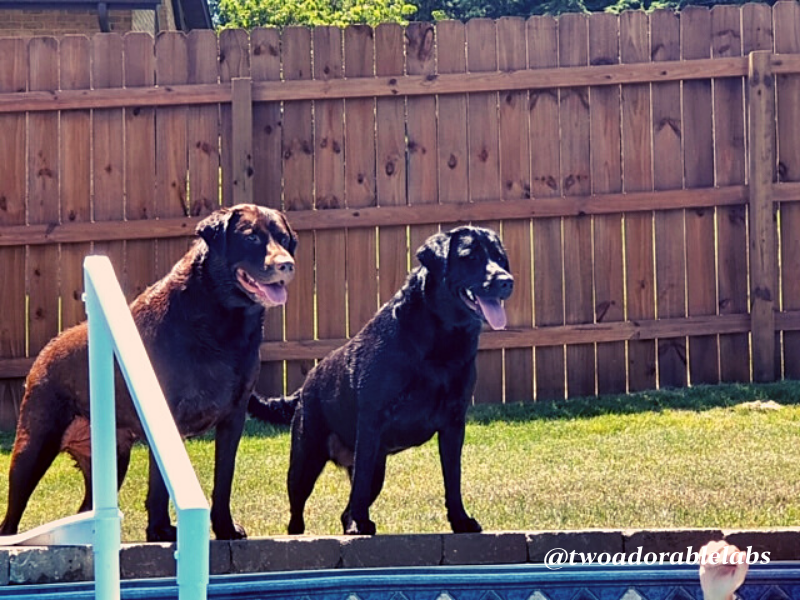
Post-Treatment Care for Your Yard and Dogs
Allowing Sufficient Time for the Treatment to Settle
After applying weed and feed products, it is crucial to allow sufficient time for the treatment to settle before resuming regular activities in the yard. The drying and settling time may vary depending on the specific products used, as well as environmental conditions such as temperature and humidity. It is recommended to wait at least 24-48 hours or follow the manufacturer’s instructions before allowing your dogs or children to play on the treated areas. By giving the treatment time to settle, you can ensure its maximum effectiveness and minimize potential risks.
Maintaining Regular Watering and Proper Irrigation
To ensure the longevity and effectiveness of the weed and feed treatment, it is important to maintain regular watering and proper irrigation practices in your yard. Adequate watering helps the products penetrate the ground and reach the roots of the weeds, ensuring their eradication. Additionally, proper irrigation ensures healthy grass growth and minimizes the risk of weed infestations. Consult local guidelines or seek professional advice on the appropriate watering schedule and techniques for your specific grass type and region.
Avoiding Excessive Lawn Traffic
To maintain the health and integrity of your yard after weed and feed treatment, it is advisable to avoid excessive lawn traffic. Limit activities such as heavy foot traffic, sports, or children’s play that may cause excessive stress or damage to the grass. Additionally, avoid parking vehicles or placing heavy objects on the treated areas. By reducing lawn traffic, you allow the grass to recover and establish a strong root system, promoting a lush and healthy yard for both your dogs and the entire family to enjoy.
Ensuring Dogs Do Not Eat Grass or Ground Clippings
While dogs may have a natural instinct to chew on grass, it is crucial to prevent them from consuming grass or ground clippings in the treated areas. Some weed and feed products can leave residues on the grass, which may be harmful if ingested. Train and supervise your dogs to discourage grazing behaviors in the treated yard. If your dogs tend to eat grass or ground clippings, consider providing them with appropriate chew toys or treats to divert their attention. By ensuring your dogs do not eat grass or ground clippings, you can prevent any potential ingestion of harmful chemicals.
Monitoring Dogs for Any Unusual Behavior or Symptoms
After the weed and feed treatment, it is vital to closely monitor your dogs for any signs of unusual behavior or symptoms. While dog-friendly products aim to be safe, individual sensitivities or allergies can still occur. Watch for any signs of irritation, discomfort, excessive scratching, or changes in behavior. If you notice anything concerning, contact your veterinarian for guidance. They can assess your dogs and provide appropriate recommendations or treatment options. By monitoring your dogs’ well-being, you can promptly address any potential health issues and ensure their continued safety.
Common Mistakes to Avoid When Using Weed and Feed
Overusing Weed and Feed Products
One common mistake to avoid when using weed and feed products is overusing them. Applying excessive amounts of weed and feed can lead to nutrient imbalances in the soil, resulting in poor grass health and potential harm to your dogs. Follow the manufacturer’s recommended application rates and intervals carefully. Applying the products as directed helps prevent overuse and promotes a healthy and balanced lawn.
Applying Weed and Feed During Hot or Windy Conditions
Another mistake to avoid is applying weed and feed products during hot or windy conditions. High temperatures can cause the products to dry too quickly, reducing their effectiveness. Windy conditions can also lead to uneven distribution or blow the products onto unintended areas, potentially endangering your dogs. Check the weather forecast and choose a day with moderate temperatures and calm winds for the application. By avoiding extreme conditions, you can ensure the optimal efficacy of the weed and feed treatment.
Mixing Different Products Indiscriminately
Mixing different weed and feed products indiscriminately is a mistake that can have adverse effects on your lawn and your dogs. Various products have different active ingredients, application rates, and recommended usage guidelines. Mixing them without proper understanding or knowledge of their compatibility can result in chemical reactions, diminished efficacy, or potential harm to your dogs. Stick to one weed and feed product at a time and follow the manufacturer’s instructions strictly to avoid any unintended consequences.
Ignoring Warning Signs and Instructions
Ignoring warning signs and instructions provided by the manufacturer is a significant mistake that can compromise your dogs’ safety and the effectiveness of the weed and feed treatment. Manufacturers provide warning labels and precautions for a reason, highlighting potential risks and necessary safety measures. Ignoring or dismissing these warnings can lead to accidental exposure or harm to your dogs. Take the time to read and understand the instructions and warnings provided, and follow them diligently to ensure a safe and successful application.
Failure to Consider Alternative Lawn Care Options
An often overlooked mistake is a failure to consider alternative lawn care options. While weed and feed products may be commonly used, they are not the only solution for maintaining a healthy yard. Research and explore alternative lawn care methods that may be better suited for your dogs’ safety and well-being. Consider natural weed control techniques, dog-friendly ground covers, artificial turf, or raised beds as potential alternatives. By considering other options, you can find a lawn care approach that fits your specific needs and prioritizes your dogs’ health.
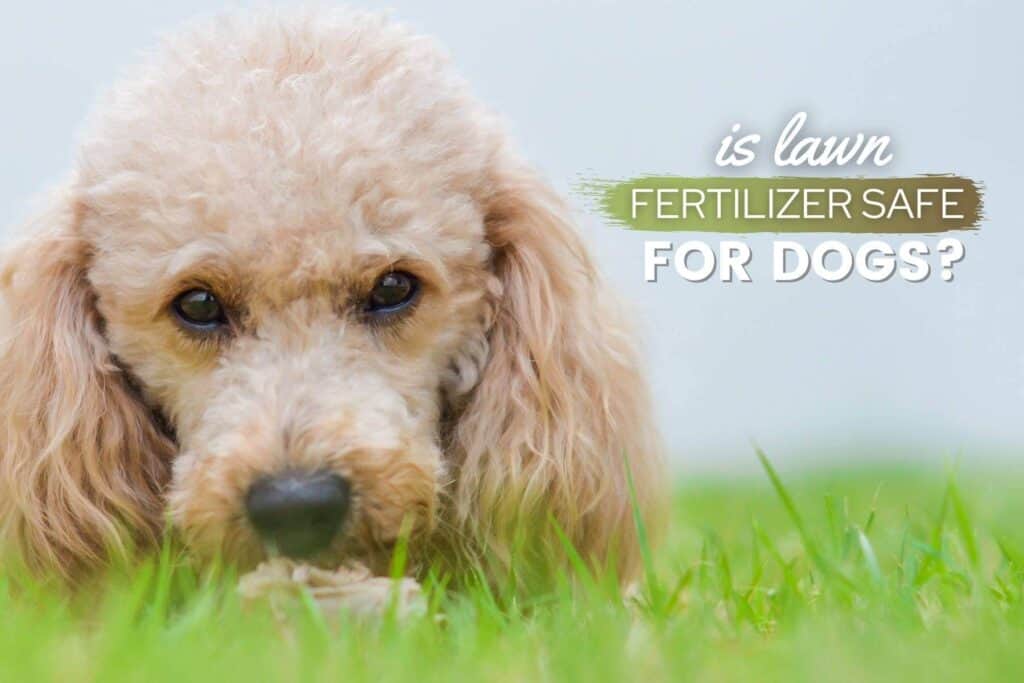
Recognizing and Treating Weed and Feed-related Health Issues in Dogs
Identifying Common Symptoms and Allergic Reactions
Despite using dog-friendly weed and feed products, it is still possible for dogs to experience mild irritation or allergic reactions. It is crucial to be able to identify common symptoms and reactions in order to promptly address any health issues. Keep an eye out for signs such as excessive scratching, redness, swelling, hives, or respiratory distress. If your dogs exhibit any of these symptoms after exposure to weed and feed products, contact your veterinarian immediately for guidance and appropriate treatment options.
Contacting a Veterinarian for Guidance
If you suspect that your dogs are experiencing weed and feed-related health issues, it is essential to contact your veterinarian for guidance. Veterinarians are trained to handle and treat various health conditions in animals, including those associated with chemical exposures. They can assess your dogs’ symptoms, determine the appropriate course of action, and recommend specific treatments or interventions to alleviate any discomfort or adverse reactions. Consulting a veterinarian is crucial to ensure the well-being and recovery of your dogs.
Promptly Washing and Rinsing Dogs’ Paws and Coats
After your dogs have been exposed to weed and feed products, it is important to promptly wash and rinse their paws and coats, even if they show no signs of discomfort. This precautionary measure helps remove any potential residue or chemicals that may have adhered to their fur or paws. Use mild pet-friendly shampoo or water to thoroughly clean your dogs, and rinse them well to ensure all the product is removed. By washing and rinsing your dogs, you can minimize the chance of any residual chemicals being ingested or absorbed through their skin.
Administering Appropriate Medications or Treatments
In cases where dogs experience more severe or persistent symptoms related to weed and feed exposure, your veterinarian may recommend administering specific medications or treatments. These could include antihistamines, corticosteroids, or soothing topical ointments. The administration of medications or treatments should always be done under veterinary guidance to ensure the correct dosage and proper usage. By following your veterinarian’s instructions, you can help alleviate your dogs’ discomfort and facilitate their recovery.
Adjusting Future Weed and Feed Practices
If your dogs have had adverse reactions to weed and feed products in the past, it may be necessary to adjust your future weed and feed practices. Consider switching to different dog-friendly products or exploring alternative lawn care options. Discuss your concerns and experiences with your veterinarian to receive personalized recommendations and guidance. By adjusting your weed and feed practices, you can ensure the safety and well-being of your dogs while still achieving a healthy and beautiful yard.
Long-term Yard Maintenance Strategies for Dog Owners
Regular Mowing and Trimming
Maintaining a regular mowing and trimming schedule is vital for the long-term health and beauty of your yard, especially as a dog owner. Dogs can contribute to uneven grass growth and wear down sections of the lawn through their playful activities. By mowing and trimming regularly, you can keep the grass at the appropriate height, promote strong and uniform growth, and prevent the development of weed-prone areas. Additionally, regularly removing overgrown vegetation reduces potential hiding spots for pests and allows for better air circulation.
Adequate Watering and Soil Management
Proper watering and soil management are key to maintaining a healthy yard for your dogs. Adequate watering helps to keep the grass hydrated and supports nutrient absorption, leading to stronger root systems and resilient grass. Monitor the moisture levels in your yard and adjust your watering schedule according to your grass type and climate. Additionally, proper soil management, including periodic aeration and fertilization, helps maintain optimal soil health and nutrient balance. By implementing these practices, you can promote a thriving and dog-friendly landscape.
Periodic Soil Testing and Nutrient Supplements
To ensure your yard is receiving the necessary nutrients, periodic soil testing is recommended. Soil testing provides insights into the nutrient composition and pH level of your soil, allowing you to make informed decisions about nutrient supplements. Based on the soil test results, consult with a lawn care professional or your local agricultural extension office to determine the appropriate fertilizer or nutrient supplements to enhance your soil’s fertility. By maintaining a nutrient-rich soil, you can foster healthy grass growth and discourage weed growth.
Natural Weed Control Methods
As a dog owner, you may choose to prioritize natural weed control methods over traditional weed and feed products. Natural weed control methods include techniques such as hand-weeding, mulching, and the use of vinegar or boiling water for spot treatments. Additionally, practices like proper watering, regular mowing, and maintaining healthy grass growth can naturally suppress weed growth. Incorporating natural weed control methods into your yard maintenance routine reduces the need for chemical-based products, creating a safer and more dog-friendly environment.
Maintaining a Dog-friendly Landscape Design
When planning the layout and design of your yard, consider incorporating dog-friendly elements. Designate specific areas for your dogs to play and explore, ensuring they have plenty of space for their activities. For example, create a dog run or an enclosed play area that is separate from the main lawn. Use durable and pet-safe materials for paths, patios, and seating areas to endure the wear and tear of your dogs’ activities. By maintaining a dog-friendly landscape design, you can create a harmonious balance between your dogs’ needs and an aesthetically pleasing yard.
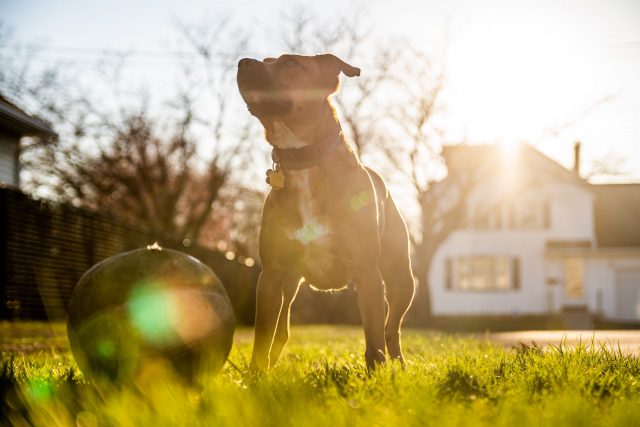
Alternative Yard Care Options for Dog Owners
Chemical-Free Weed Management Techniques
If you are concerned about using any weed and feed products, consider exploring chemical-free weed management techniques. These techniques aim to control weeds without the use of chemicals or pesticides. Examples of chemical-free weed management include manual weed pulling, using organic mulch to smother weeds, or employing natural weed control products containing ingredients like corn gluten meal. Chemical-free weed management techniques offer a safer and more environmentally friendly approach for dog owners while effectively managing weed growth.
Dog-friendly Ground Cover Alternatives
Instead of a traditional grass lawn, dog owners may opt for dog-friendly ground cover alternatives. Various ground cover plants can tolerate dogs’ activities better than grass, offering a more resilient and low-maintenance option. Examples of dog-friendly ground covers include clover, creeping thyme, or ornamental grasses such as fountain grass. These alternatives provide a soft surface for dogs to walk and play on while withstanding typical wear and tear. By choosing dog-friendly ground cover alternatives, you can maintain a beautiful yard that accommodates your dogs’ needs.
Artificial Turf and Dog-safe Grass Varieties
Another alternative yard care option for dog owners is artificial turf or dog-safe grass varieties. Artificial turf offers a low-maintenance and durable surface that can withstand your dogs’ activities without the need for weed and feed products. It provides a consistent and easily cleanable area for your dogs to play. If you prefer natural grass, consider dog-safe grass varieties that are known for their resilience, such as Bermuda grass or Buffalo grass. These varieties can handle moderate wear and pet traffic while remaining lush and healthy.
Creating Dog Zones or Potty Areas
To minimize the impact on your lawn and simplify yard maintenance, consider creating designated dog zones or potty areas for your dogs. These areas can be covered with materials such as gravel, mulch, or artificial turf, which are easier to clean and maintain. Train your dogs to use these designated areas for their bathroom needs, and regularly clean and refresh the surface to ensure cleanliness and hygiene. By creating dog zones or potty areas, you can concentrate your yard care efforts and preserve the rest of your lawn.
Utilizing Raised Beds or Container Gardening
If you enjoy gardening but want to protect your plants from your dogs’ curiosity or activities, utilizing raised beds or container gardening is a practical solution. Raised beds elevate your plants, making them less accessible to dogs, while container gardening allows you to move plants to safer locations as needed. Both options offer greater control over your gardening environment and protect your plants from trampling or digging. By using raised beds or container gardening, you can nurture your green thumb while keeping your dogs and yard in harmony.
Conclusion
As a dog owner, ensuring the health and safety of your furry companions is of paramount importance. When maintaining your yard’s weed and feed needs, selecting dog-friendly products is crucial to minimize potential risks and maintain a safe environment. By understanding the importance of dog-friendly products, reading labels and ingredients carefully, and avoiding harmful chemicals and pesticides, you can make informed choices that prioritize your dogs’ well-being.
Preparing your yard for weed and feed treatment involves clearing the yard of dog toys, water, and food bowls, removing any obstacles and debris, mowing the lawn to an appropriate height, dealing with existing weeds, and applying pre-emergent weed control. These steps create an optimal surface for weed and feed application, ensuring its effectiveness while keeping your dogs safe.
To protect your dogs during weed and feed application, keeping them away from treated areas, restricting access to the yard, providing alternative exercise and play areas, cleaning up any spills or overapplication immediately, and monitoring them for any signs of irritation or allergies are essential safety measures. Implementing these measures minimizes the risk of exposure and provides a secure environment for your dogs.
Proper application techniques, including following manufacturer instructions and guidelines, using appropriate protective clothing and equipment, dividing and marking the yard into sections, applying weed and feed products uniformly, and watering the yard after application, contribute to successful and safe weed and feed treatment. These techniques help achieve even distribution, maximize effectiveness, and reduce potential risks.
After the weed and feed treatment, post-treatment care involves allowing sufficient time for the treatment to settle, maintaining regular watering and proper irrigation, avoiding excessive lawn traffic, ensuring dogs do not eat grass or ground clippings, and monitoring dogs for any unusual behavior or symptoms. By implementing these care practices, you promote the longevity of the treatment and maintain a dog-friendly yard.
Common mistakes to avoid when using weed and feed products include overusing them, applying them during hot or windy conditions, mixing different products indiscriminately, ignoring warning signs and instructions, and failing to consider alternative lawn care options. By being aware of these mistakes, you can make informed choices and avoid pitfalls that may compromise your dogs’ health and the effectiveness of the weed and feed treatment.
In cases where dogs experience weed and feed-related health issues, recognizing common symptoms and allergic reactions, contacting a veterinarian for guidance, promptly washing and rinsing their paws and coats, administering appropriate medications or treatments, and adjusting future weed and feed practices are crucial steps. Through these actions, you can address health issues effectively, ensure your dogs’ comfort, and prevent future incidents.
Long-term yard maintenance strategies for dog owners include regular mowing and trimming, adequate watering and soil management, periodic soil testing and nutrient supplements, natural weed control methods, and maintaining a dog-friendly landscape design. Incorporating these strategies not only creates a healthy yard for your dogs but also enhances the overall aesthetics and sustainability of your outdoor space.
For dog owners seeking alternative yard care options, exploring chemical-free weed management techniques, dog-friendly ground cover alternatives, artificial turf and dog-safe grass varieties, creating dog zones or potty areas, and utilizing raised beds or container gardening can provide suitable solutions. These alternatives cater to your dogs’ needs while fulfilling your desire for a well-maintained and appealing yard.
In conclusion, prioritizing your dogs’ health and safety when selecting, applying, and maintaining weed and feed products is essential. By considering dog-friendly options and following proper procedures, you can strike a balance between yard care and your canine companions’ well-being. Choose the right approach that aligns with your specific needs, allowing you to enjoy a beautiful, safe, and dog-friendly yard.

